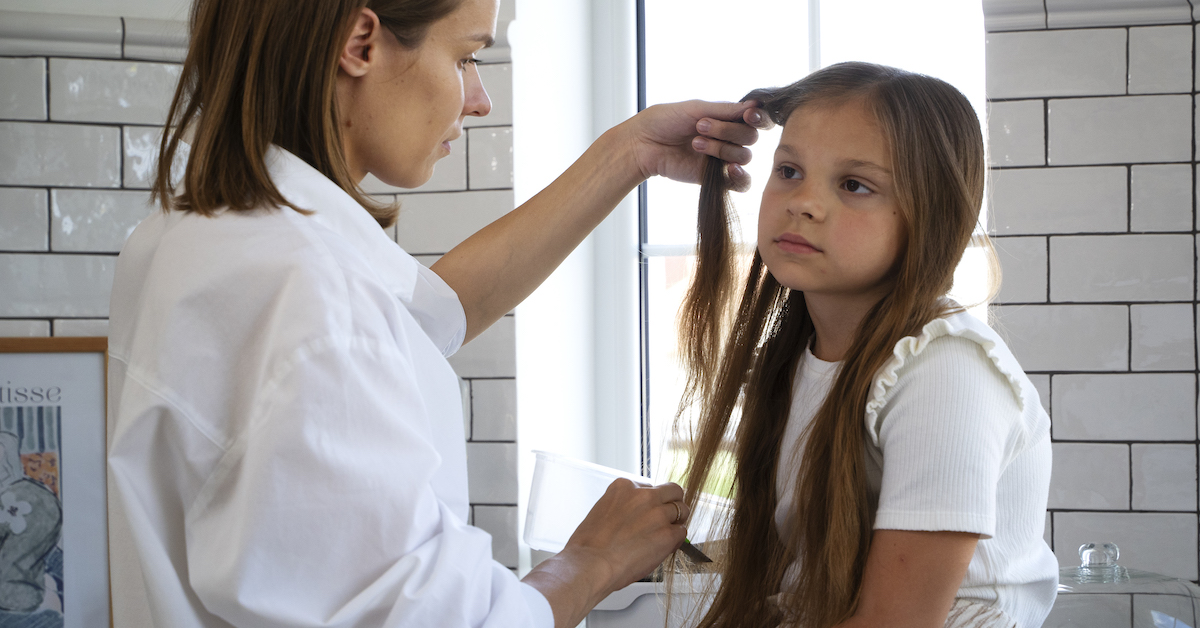An itch here and a scratch there can seem like nothing at first. A few days later you notice that the scratching is becoming more frequent and seems as if it’s gradually getting worse. You might notice some raised patches of skin around your hairline and your first thought might be that you’re having a reaction to a recent hair care product you used.
Truthfully, you are having a reaction to something but it’s not your hair gel.
Head lice is an incredibly difficult and annoying condition to treat without the proper tools and treatments needed. On top of that, it is a condition that can gradually worsen in a very short amount of time. Therefore getting a diagnosis is vital in the treatment journey of head lice. Below we will discuss the early signs and symptoms for head lice and treatment options available at The Lice Clinics Spartanburg.
Table of Contents
First: What Are Head Lice?
Also called Pediculus humanus capitis, head lice are a parasitic insect that affect the scalp, eyelashes, and eyebrows of humans. They survive on the blood of humans and can live on the scalp for about 30 days. They have six legs total and each are equipped with small hooks at the ends, which allows them to attach tightly to the hair strands.
Head lice and nits (lice eggs) are almost exclusively found on the scalp and it is uncommon for them to survive on other parts of the body. You can find them residing in what are known as hot spots on the head: behind the ears, at the base of the neck, at the crown, and around the hairline. Their nits are found about ¼ of an inch above the scalp which makes them incredibly difficult to remove from the scalp, somewhat cemented in the hair without the proper removal tools.
Who Is At Risk Of Catching Head Lice?
On a national average, children are most at risk to catch this condition, specifically those aged 3-11 years of age. About 6-12 million infestations of head lice occur in the United States every year. Head lice also are least likely to affect African Americans due to the nature of head lice and how they grip to the hair shaft.
Head lice move around the hair by crawling. They do not have wings and therefore they cannot fly nor can they jump. They are spread between people through sharing hair tools and accessories or pillowcases. Head lice has nothing to do with hygiene and strictly relies on contact transmission.
Symptoms Of Head Lice
Some common symptoms of head lice include: a tickling feeling on the hair, itching and scratching, difficulty sleeping, and sores/raised skin on the scalp or hairline. To be clear, you cannot technically feel a louse crawling on your head. What you do feel, however, is the after effect of their bite on your scalp and your skin’s reaction to that bite.
By their nature, head lice can be difficult to identify with a naked eye. For starters, they are incredibly small and fast-moving. An adult head louse is about the size of a sesame seed and the nits females lay are about the size of a knot in a piece of thread. The nits themselves are even more difficult to identify because of how close they are to the scalp. From the naked eye they are often confused for dandruff or dirt on the scalp. Adult head lice, on the other hand, tend to be difficult to diagnose not only because of their size and speed but also their color. These insects tend to be the same color as the hair of the person they are infecting, so seeing it with an untrained eye will be nearly impossible.
A professional lice treatment center will often diagnose a case of head lice by using a microscope to locate a live adult louse or nymph. Once identified, they will discuss the proper treatment in order to eradicate the issue. Although a nuisance to deal with, head lice do not spread disease. That being said, one can catch a bacterial infection but rather than be from the insects, it can come from the constant head scratching and the bacteria buildup under fingernails.
Treatments
There are many treatment options available but the best one is going to a professional lice treatment center. At The Lice Clinics we pride ourselves on being the first and only step you’ll need to take in treating head lice. Our completely guaranteed Lice Tech machine uses heat to completely kill head lice and dehydrate their nits. Starting at $199 we will use the Lice Tech for about 30 minutes, followed by a comb-out to completely remove the insects and eggs. Lastly we’ll apply an oil treatment to the scalp.
Other treatments include the Lice Tech Express, a take home do-it-yourself-kit that you can pick up at one of our locations, and a traditional comb-out. We want to ensure that our treatments are available for everyone and their budgets, which is why we offer a number of treatments. The quickest and most effective way to treat head lice is to visit a professional as soon as possible. If left unchecked, the condition will not only worsen but also spread.
Look No Further Than The Lice Clinics in Spartanburg!
We are confident in our technology to produce top tier results in treating head lice. In fact, we even offer a 30 day service re-treatment policy for anyone who visited our office and received treatment that proved to be ineffective, for free. We mean business.
